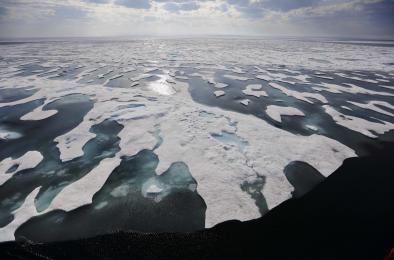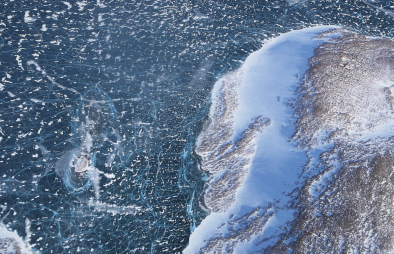Science Source
Decline in Arctic sea ice thickness from submarine and ICESat records: 1958–2008
- Places the decline of sea ice thickness in the Arctic Ocean from ICESat (2003 – 2008) in the context of estimates from 42 years of submarine records (1958 – 2000)—described by Rothrock et al. (1999, 2008)
- Finds that while the earlier 1999 work provides a longer historical record of the regional changes, the latter offers a more refined analysis, over a sizable portion of the Arctic Ocean supported by a much stronger and richer data set
- Finds the overall mean winter thickness of 3.64 m in 1980 can be compared to a 1.89 m mean during the last winter of the ICESat record— an astonishing decrease of 1.75 m in thickness
- Finds that between 1975 and 2000, the steepest rate of decrease is 0.08 m/yr in 1990 compared to a slightly higher winter/summer rate of 0.10/0.20 m/yr in the five-year ICESat record (2003 – 2008)
- Finds that prior to 1997, ice extent in the DRA was >90% during the summer minimum
- Says this can be contrasted to the gradual decrease in the early 2000s followed by an abrupt drop to <55% during the record setting minimum in 2007
- This combined analysis shows a long-term trend of sea ice thinning over submarine and ICESat records that span five decades
Related Content
Science Source
| Bulletin of the American Meteorological Society
More-Persistent Weak Stratospheric Polar Vortex States Linked to Cold Extremes
Marlene Kretschmer, Dim Coumou, Laurie Agel et al
Headline

Jul 31, 2017 | PBS NewsHour
Arctic journey shows the glaring effects of climate change
Headline

Jul 28, 2017 | Washington Post
How loss of Arctic sea ice further fuels global warming
Headline

Jul 17, 2017 | Bloomberg
How a Melting Arctic Changes Everything: Part I


